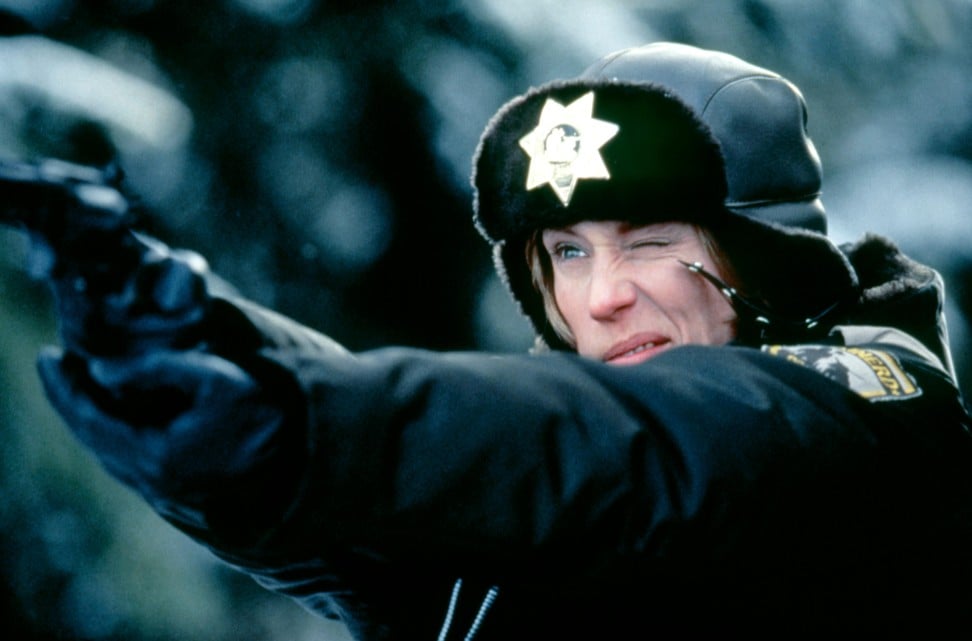
Classic American films: Fargo – how Coen brothers’ 1996 noir awed with its brutal, dark but funny tale
- Starring William H Macy, Steve Buscemi, Peter Stormare and Frances McDormand, Fargo received seven Oscar nominations, winning two
- McDormand’s sharp-but-sweet Sheriff Marge Gunderson was one of the era’s most lovable characters
In this regular feature series on some of the most talked-about films, we examine the legacy of classics, re-evaluate modern blockbusters, and revisit some of the most memorable lines in film. We continue this week with the 1996 film Fargo .
The Coen brothers have always loved the Mephistophelian mechanics of film noir. Their debut, 1984’s Blood Simple, was a sweaty tale of spiralling greed, while 1998’s The Big Lebowski was part Raymond Chandler, part stoner comedy. In crossover hit Fargo, they combine noir with character drama to bring a new quality to their work: innocence.
But don’t let that fool you. The first thing we are told – that Fargo is a true story – is just another trick. The (totally fictional) film doesn’t even take place in Fargo, but in nearby Brainerd, home of the legendary giant lumberjack Paul Bunyan.
Still, the first shot, of cars driving through the snowy Minnesota wilderness, elegantly sets out the stall. This is a place where everyone feels lost, whether in the unforgiving landscape or the moral murk of their decisions.
The plot concerns a hapless car salesman Jerry Lundegaard (William H Macy) who hires two goons, Carl Showalter (Steve Buscemi) and Gaear Grimsrud (Peter Stormare), to kidnap his wife Jean (Kristin Rudrud), because he needs the ransom money that he presumes his wealthy father-in-law will pay. Trouble is, they’re useless. Carl leaves the dealer plates on the car and gets pulled over by a cop, who Gaear shoots, precipitating a pointless bloodbath.
Besides offering great parts for Macy and Buscemi, two of the 1990s’ best sad-sack actors, the Coens’ richly textured, Oscar-winning script introduces one of the era’s most lovable characters in Sheriff Marge Gunderson, memorably played by Frances McDormand – the wife of Joel Coen, and another Oscar recipient.


Wide-eyed, endlessly chipper and very pregnant, Marge is as sharp as a tack but hides it behind her natural sweetness. We first meet her in bed with her doting husband Norm (John Carroll Lynch from Zodiac) as she’s woken with news of the shooting.
Next, at the scene of the crime, she establishes what must have happened immediately, before offering the following benediction for the slain officer: “He looks like a nice enough guy. What a shame.” Clearly, Carl and co will be no match for this down-home Holmes.
There is some tedium in how it all shakes out, with the Coens spending a lot of time poking fun at the locals. But this is not, as in most noir, about fate encircling the characters like a noose. Instead the film presents a brutally random universe – like the looping doodles Jerry draws on his notepad – where the only way to navigate it is with decency.


After Marge captures Grimsrud, she chides him: “There’s more to life than money, you know?” Then we cut to her and Norm safe in bed. He’s won a painting competition, and one of his works will appear on a three-cent stamp. He’s dismissive of the achievement, but she tells him that “people need the little stamps” – or, in other words, learn to be happy with your lot.
The film ends with them considering the baby, who will arrive in “two more months”. You might wonder who would want to bring a child into such a world, but if these two sweethearts can’t manage it, no one can.

